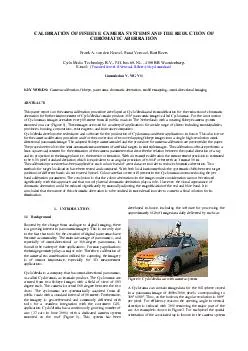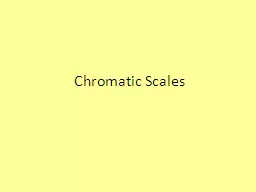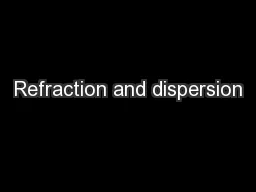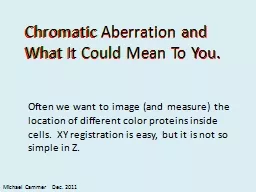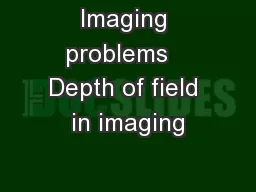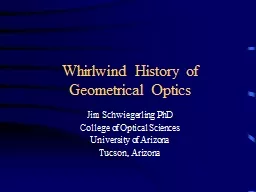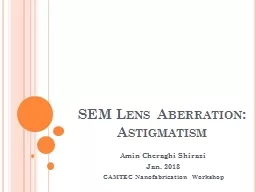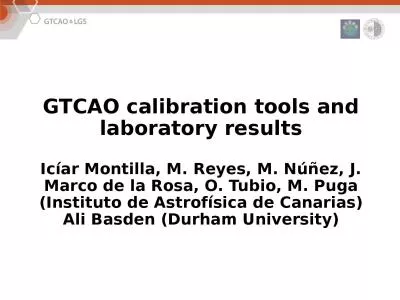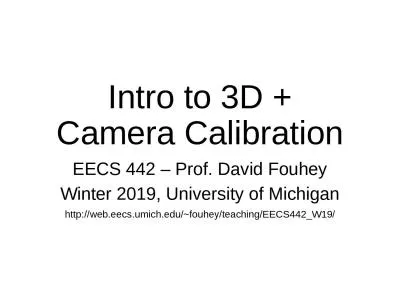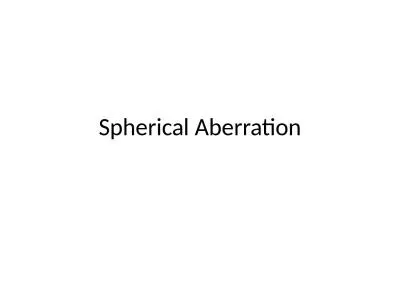PDF-CALIBRATION OF FISHEYE CAMERA SYSTEMS AND THE REDUC TION OF CHROMATIC ABERRATION Frank
Author : alida-meadow | Published Date : 2014-12-02
van den Heuvel Ruud Verwaal Bart Beers CycloMedia Technology BV PObox 68 NL 4180 B B Waardenburg Email FvandenHeuvel RVerwaal BBeerscyclomedianl Commission V WG
Presentation Embed Code
Download Presentation
Download Presentation The PPT/PDF document "CALIBRATION OF FISHEYE CAMERA SYSTEMS AN..." is the property of its rightful owner. Permission is granted to download and print the materials on this website for personal, non-commercial use only, and to display it on your personal computer provided you do not modify the materials and that you retain all copyright notices contained in the materials. By downloading content from our website, you accept the terms of this agreement.
CALIBRATION OF FISHEYE CAMERA SYSTEMS AND THE REDUC TION OF CHROMATIC ABERRATION Frank: Transcript
van den Heuvel Ruud Verwaal Bart Beers CycloMedia Technology BV PObox 68 NL 4180 B B Waardenburg Email FvandenHeuvel RVerwaal BBeerscyclomedianl Commission V WG V1 KEY WORDS Camera calibration fisheye panorama chromatic abe rration mobile mapping. Aberration: a departure from the paraxial limit.. Paraxial limit: (1) Rays are kept close to the optic axis.. . (2) Small angle approximation (1. st. Order). 5. th. Order. . 3. rd. Order. Chromatic Scale . A scale made completely of half steps. 13 notes. Starts and stops on the same note name. Use sharps going up (higher). Use flats going down (lower). Chromatic Scale (higher). The following steps will always get you the correct answer.. ‘s law:. n. 1. sin. θ. 1. = n. 2. sin. θ. 2. Refractive index depends on wavelength of light (color). With different refractive indices, colors are . dispersed. Chromatic aberration. To generate a sharp image, light must converge at the same point.. Module . 7. Panoramic Photography . is a technique that captures images with elongated fields of view. . This generally means a photo measures a . ratio of 2:1 or larger, . the image being at least twice as long as high.. L*=1.5m CEPC . I. nteraction Region. Yiwei. Wang, . Dou Wang, . Sha. Bai. Yingshun. Zhu, . Teng. Yue. CEPC acc. meeting, 5 September 2014. IR optics with L*=1.5m. b. etx. *=0.8m, . bety. *=1.2mm, L*=1.5m. Chromatic Aberration and What It Could Mean To You.. Often we want to image (and measure) the location of different color proteins inside cells. XY registration is easy, but it is not so simple in Z.. . But not ideal! Maps (and blurs) a very narrow angle range from one object point . Dq. . . . r/L. to one image point. . Depth of field in imaging. . Sometimes a nice effect, sometimes a problem. Jim Schwiegerling PhD. College of Optical Sciences. University of Arizona. Tucson, Arizona. Euclid. Raphael’s . School of Athens. Euclid ~300BC. Greek mathematician. His book . Elements. used to teach geometry for over 2000 years.. Amin. . Cheraghi. . Shirazi. Jan. 2013. CAMTEC Nanofabrication Workshop. SEM. 2. Lens. . Aberrations. . Spherical Aberration. Chromatic Aberration. Diffraction. Astigmatism. 3. Spherical Aberration. results. Icíar. Montilla, . M. . Reyes, M. . Núñez. , J. Marco de la . R. osa, O. . Tubio. , M. . Puga. (. Instituto. de . Astrofísica. de Canarias). Ali . Basden. . (Durham University). GTCAO overview. EECS 442 – Prof. David . Fouhey. Winter 2019, University of Michigan. http://web.eecs.umich.edu/~fouhey/teaching/EECS442_W19/. Administrivia . Homework 4 due . Sunday. Homework 4 due Thursday (1 week). Yunhai Cai. SLAC National Accelerator Laboratory. October 10, 2014. Higgs Factory Workshop, 2014. Beijing, China. Design Parameters. LEP2. HF2014. Beam Energy [. GeV. ]. 104.5. 120.0. Circumference. [km]. positions.. Definition:. Diagram:. Diagram:. Diagram:. Diagram:. Ideal situation. Real situation. Diagram:. Photo:. Positive …. aberration. Negative …. aberration. zero …. aberration. Correction:. Ales . Zita. Publication. Digital Image Forgery Detection Based on Lens and Sensor Aberration. Authors. . : . Ido. . Yerushalmy. , . Hagit. Hel-Or. . Dept. of Computer Science, University of Haifa, Israel.
Download Document
Here is the link to download the presentation.
"CALIBRATION OF FISHEYE CAMERA SYSTEMS AND THE REDUC TION OF CHROMATIC ABERRATION Frank"The content belongs to its owner. You may download and print it for personal use, without modification, and keep all copyright notices. By downloading, you agree to these terms.
Related Documents

